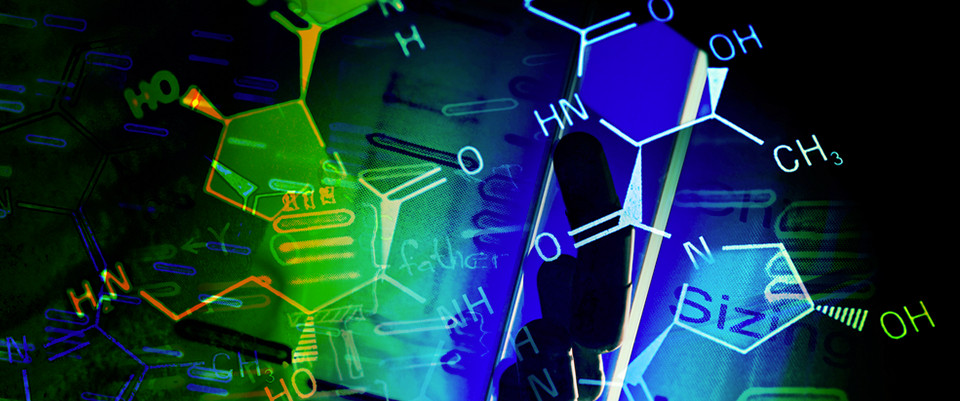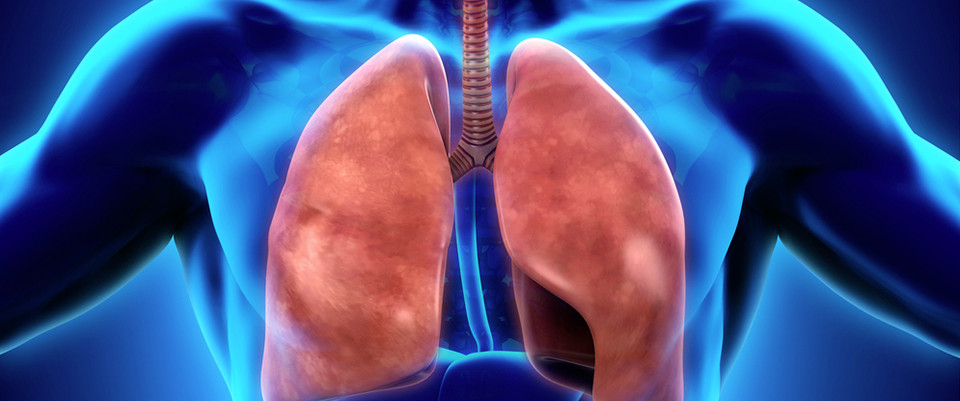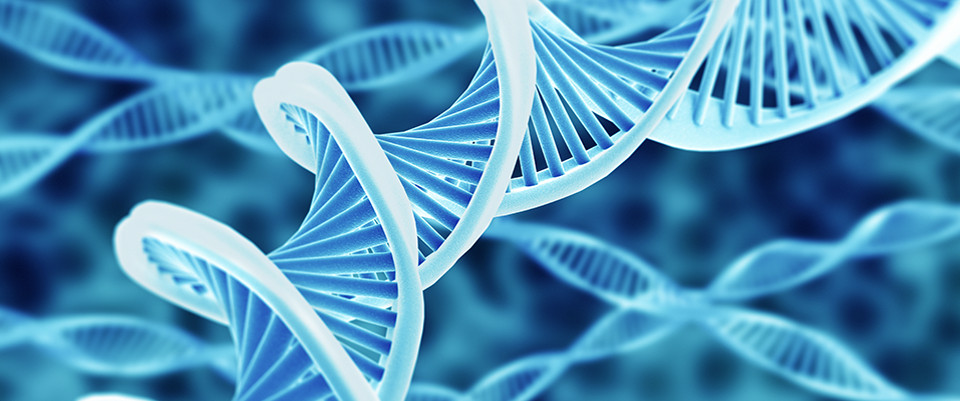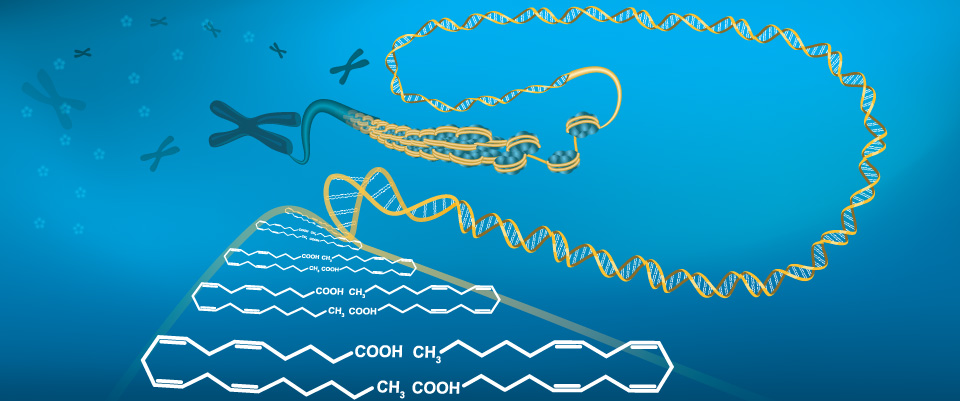PubMed
SOX1 promotes differentiation of nasopharyngeal carcinoma cells by activating retinoid metabolic pathway.
SOX1 promotes differentiation of nasopharyngeal carcinoma cells by activating retinoid metabolic pathway.
Cell Death Dis. 2020 May 07;11(5):331
Authors: Lei XX, Liu Y, Wang JX, Cai Q, Yan M, He HP, Liu Q, Long ZJ, Guan Z
Abstract
Undifferentiation is a key feature of nasopharyngeal carcinoma (NPC), which presents as a unique opportunity for intervention by differentiation therapy. In this study, we found that SOX1 inhibited proliferation, promoted differentiation, and induced senescence of NPC cells, which depended on its transcriptional function. RNA-Seq-profiling analysis showed that multiple undifferentiated markers of keratin family, including KRT5, KRT13, and KRT19, were reduced in SOX1 overexpressed NPC cells. Interestingly, gene ontology (GO) analysis revealed genes in SOX1 overexpressed cells were enriched in extracellular functions. The data of LC/MS untargeted metabolomics showed that the content of retinoids in SOX1 overexpressed cells and culture medium was both higher than that in the control group. Subsequently, we screened mRNA level of genes in retinoic acid (RA) signaling or metabolic pathway and found that the expression of UDP-glucuronosyltransferases was significantly decreased. Furtherly, UGT2B7 could rescue the differentiation induced by SOX1 overexpression. Inhibition of UGTs by demethylzeylasteral (T-96) could mimic SOX1 to promote the differentiation of NPC cells. Thus, we described a mechanism by which SOX1 regulated the differentiation of NPC cells by activating retinoid metabolic pathway, providing a potential target for differentiation therapy of NPC.
PMID: 32382038 [PubMed - in process]
Perturbations of the Gut Microbiome and Metabolome in Children with Calcium Oxalate Kidney Stone Disease.
Perturbations of the Gut Microbiome and Metabolome in Children with Calcium Oxalate Kidney Stone Disease.
J Am Soc Nephrol. 2020 May 07;:
Authors: Denburg MR, Koepsell K, Lee JJ, Gerber J, Bittinger K, Tasian GE
Abstract
BACKGROUND: The relationship between the composition and function of gut microbial communities and early-onset calcium oxalate kidney stone disease is unknown.
METHODS: We conducted a case-control study of 88 individuals aged 4-18 years, which included 44 individuals with kidney stones containing ≥50% calcium oxalate and 44 controls matched for age, sex, and race. Shotgun metagenomic sequencing and untargeted metabolomics were performed on stool samples.
RESULTS: Participants who were kidney stone formers had a significantly less diverse gut microbiome compared with controls. Among bacterial taxa with a prevalence >0.1%, 31 taxa were less abundant among individuals with nephrolithiasis. These included seven taxa that produce butyrate and three taxa that degrade oxalate. The lower abundance of these bacteria was reflected in decreased abundance of the gene encoding butyryl-coA dehydrogenase (P=0.02). The relative abundance of these bacteria was correlated with the levels of 18 fecal metabolites, and levels of these metabolites differed in individuals with kidney stones compared with controls. The oxalate-degrading bacterial taxa identified as decreased in those who were kidney stone formers were components of a larger abundance correlation network that included Eggerthella lenta and several Lactobacillus species. The microbial (α) diversity was associated with age of stone onset, first decreasing and then increasing with age. For the individuals who were stone formers, we found the lowest α diversity among individuals who first formed stones at age 9-14 years, whereas controls displayed no age-related differences in diversity.
CONCLUSIONS: Loss of gut bacteria, particularly loss of those that produce butyrate and degrade oxalate, associates with perturbations of the metabolome that may be upstream determinants of early-onset calcium oxalate kidney stone disease.
PMID: 32381601 [PubMed - as supplied by publisher]
Network based strategies in metabolomics data analysis and interpretation: from molecular networking to biological interpretation.
Network based strategies in metabolomics data analysis and interpretation: from molecular networking to biological interpretation.
Expert Rev Proteomics. 2020 May 07;:
Authors: Perez de Souza L, Alseekh S, Brotman Y, Fernie AR
Abstract
Introduction: Metabolomics has become a crucial part of systems biology; however data analysis is still often undertaken in a reductionist way focusing on changes in individual metabolites. Whilst such approaches indeed provide relevant insights into the metabolic phenotype of an organism, the intricate nature of metabolic relationships may be better explored when considering the whole system.Areas covered: This review highlights multiple network strategies that can be applied for metabolomics data analysis from different perspectives including: association networks based on quantitative information, mass spectra similarity networks to assist metabolite annotation and biochemical networks for systematic data interpretation. We also highlight some relevant insights into metabolic organization obtained through the exploration of such approaches.Expert opinion: Network based analysis is an established method that allows the identification of non-intuitive metabolic relationships as well as the identification of unknown compounds in mass spectrometry. Additionally, the representation of data from metabolomics within the context of metabolic networks is intuitive and allows for the use of statistical analysis that can better summarize relevant metabolic changes from a systematic perspective.
PMID: 32380880 [PubMed - as supplied by publisher]
1H-NMR-based urine metabolomics reveals signs of enhanced carbon and nitrogen recycling in prostate cancer.
1H-NMR-based urine metabolomics reveals signs of enhanced carbon and nitrogen recycling in prostate cancer.
J Proteome Res. 2020 May 07;:
Authors: Bruzzone C, Loizaga-Iriarte A, Sanchez-Mosquera P, Gil-Redondo R, Astobiza I, Diercks T, Cortazar AR, Ugalde-Olano A, Schaefer H, Blanco FJ, Unda M, Cannet C, Spraul M, Mato JM, Embade N, Carracedo A, Millet O
Abstract
Prostate cancer is the second most common tumor, and the fifth cause of cancer-related death among men worldwide. PC cells exhibit profound signaling and metabolic reprogramming that accounts for the acquisition of aggressive features. Whereas the metabolic understanding of this disease has increased in recent years, the analysis of such alterations through non-invasive methodologies in biofluids remains limited. Here we used NMR-based metabolomics on a large cohort of urine samples (more than 650) from PC and benign prostate hyperplasia patients to investigate the molecular basis of this disease. Multivariate analysis failed to distinguish between the two classes, highlighting the modest impact of prostate alterations on urine composition and the multifactorial nature of PC. Yet, univariate analysis of urine metabolites unveiled significant changes, discriminating PC from BPH. Metabolites with altered abundance in urine from PC patients revealed changes in pathways related to cancer biology, including glycolysis and the urea cycle. We found out that metabolites from such pathways were diminished in the urine from PC individuals, strongly supporting the notion that PC reduces nitrogen and carbon waste in order to maximize their usage in anabolic processes that support cancer cell growth.
PMID: 32380831 [PubMed - as supplied by publisher]
New microginins from cyanobacteria of Greek freshwaters.
Related Articles
New microginins from cyanobacteria of Greek freshwaters.
Chemosphere. 2020 Jun;248:125961
Authors: Zervou SK, Gkelis S, Kaloudis T, Hiskia A, Mazur-Marzec H
Abstract
Cyanobacteria can form extensive blooms in water with concurrent production and release of a large number of chemically diverse and bioactive metabolites, including hazardous toxins. Significant number of the metabolites belongs to non-ribosomal peptides, with unique residues, unusual structures and great potential for biotechnological application. The biosynthetic pathways of the peptides generate tens of variants, but only part of them has been identified. Microginins are an understudied class of cyanobacterial linear peptides with a characteristic decanoic acid derivative amino acid residue in their structure. In this study, cyanobacterial blooms and isolated strains from Greek lakes were analyzed for the presence of microginins by liquid chromatography coupled to hybrid triple quadrupole/linear ion trap mass spectrometer (LC-qTRAP MS/MS). Microginin structures were elucidated based on the obtained fragmentation spectra. A large number of microginins occurred in blooms of Greek freshwaters and the most frequently detected were Microginin FR1 (70% of samples), Microginin T1 (52%), Microginin 565B (52%), Microginin T2 (43%), and Microginin 565A (43%). Additionally, nine cyanobacterial strains i.e. Nostoc oryzae, Synechococcus sp., Microcystis aeruginosa, Microcystis viridis, and five Microcystis sp., were found to produce microginins. Thirty-six new microginin structures were characterized out of fifty-one totally detected variants. This is the first time that such a diversity of microginins is reported to be present in water bodies. Results clearly demonstrate the great metabolomic potential of cyanobacteria that inhabit Greek freshwaters and significantly expand the knowledge of cyanobacterial secondary metabolites with regards to the class of microginins.
PMID: 32059332 [PubMed - indexed for MEDLINE]
Comparative lipidomic studies of Scenedesmus sp. (Chlorophyceae) and Cylindrotheca closterium (Bacillariophyceae) reveal their differences in lipid production under nitrogen starvation.
Related Articles
Comparative lipidomic studies of Scenedesmus sp. (Chlorophyceae) and Cylindrotheca closterium (Bacillariophyceae) reveal their differences in lipid production under nitrogen starvation.
J Phycol. 2019 12;55(6):1246-1257
Authors: Wang S, Sirbu D, Thomsen L, Kuhnert N, Ullrich MS, Thomsen C
Abstract
Microalgae are a promising resource for the highly sustainable production of various biomaterials (food and feed), high-value biochemicals, or biofuels. However, factors influencing the valued lipid production from oleaginous algae require a more detailed investigation. This study elucidates the variations in lipid metabolites between a marine diatom (Cylindrotheca closterium) and a freshwater green alga (Scenedesmus sp.) under nitrogen starvation at the molecular species level, with emphasis on triacylglycerols using liquid chromatography-electrospray ionization mass spectrometry techniques. A comprehensive analysis was carried out by comparing the changes in total lipids, growth kinetics, fatty acid compositions, and glycerolipid profiles at the molecular species level at different time points of nitrogen starvation. A total of 60 and 72 triacylglycerol molecular species, along with numerous other polar lipids, were identified in Scenedesmus sp. and C. closterium, respectively, providing the most abundant triacylglycerol profiles for these two species. During nitrogen starvation, more triacylglycerol of Scenedesmus sp. was synthesized via the "eukaryotic pathway" in the endoplasmic reticulum, whereas the increase in triacylglycerol in C. closterium was mainly a result of the "prokaryotic pathway" in the chloroplasts after 96 h of nitrogen starvation. The distinct responses of lipid synthesis to nitrogen starvation exhibited by the two species indicate different strategies of lipid accumulation, notably triacylglycerols, in green algae and diatoms. Scenedesmus sp. and Cylindrotheca closterium could serve as excellent candidates for the mass production of biofuels or polyunsaturated fatty acids for nutraceutical purposes.
PMID: 31127609 [PubMed - indexed for MEDLINE]
metabolomics; +29 new citations
29 new pubmed citations were retrieved for your search.
Click on the search hyperlink below to display the complete search results:
metabolomics
These pubmed results were generated on 2020/05/08PubMed comprises more than millions of citations for biomedical literature from MEDLINE, life science journals, and online books.
Citations may include links to full-text content from PubMed Central and publisher web sites.
metabolomics; +25 new citations
25 new pubmed citations were retrieved for your search.
Click on the search hyperlink below to display the complete search results:
metabolomics
These pubmed results were generated on 2020/05/07PubMed comprises more than millions of citations for biomedical literature from MEDLINE, life science journals, and online books.
Citations may include links to full-text content from PubMed Central and publisher web sites.
metabolomics; +34 new citations
34 new pubmed citations were retrieved for your search.
Click on the search hyperlink below to display the complete search results:
metabolomics
These pubmed results were generated on 2020/05/06PubMed comprises more than millions of citations for biomedical literature from MEDLINE, life science journals, and online books.
Citations may include links to full-text content from PubMed Central and publisher web sites.
Disturbance of Fatty Acid Desaturation Mediated by FADS2 in Mesenteric Adipocytes Contributes to Chronic Inflammation of Crohn's Disease.
Related Articles
Disturbance of Fatty Acid Desaturation Mediated by FADS2 in Mesenteric Adipocytes Contributes to Chronic Inflammation of Crohn's Disease.
J Crohns Colitis. 2020 May 04;:
Authors: Liu R, Qiao S, Shen W, Liu Y, Lu Y, Huang L, Guo Z, Gong J, Shui G, Li Y, Zhu W
Abstract
ACKGROUND AND AIMS: The aim of this study was to investigate the metabolic profile of mesenteric adipocytes and the correlations between key metabolic changes and local inflammation in the context of CD.
METHODS: Metabolic dysfunction was shown to be regulated by fatty acid desaturase-2 (FADS2) through metabolomics and functional analyses of mesenteric adipose tissue biopsies and primary mesenteric adipocytes isolated from surgical specimens collected from CD patients and control subjects. FADS2 was overexpressed in vitro and in vivo using a lentiviral vector and an adeno-associated virus (AAV), respectively. The interaction between mesenteric adipocytes and inflammation responses was evaluated by establishing a cell coculture system and an FADS2-AAV treated animal model. 3T3-L1 cells were used to elucidate the mechanism underlying FADS2 deregulation.
RESULTS: We observed significant changes in the levels of metabolites involved in the multi-step synthesis of long-chain polyunsaturated fatty acids (PUFAs). Gas chromatography analysis revealed impaired desaturation fluxes towards the n-6 and n-3 pathways, which are associated with reduced FADS2 activity in human mesentery tissue. Decreased FADS2 expression at both mRNA and protein levels was confirmed in surgical specimens. The restoration of FADS2 expression, which allows for the endogenous conversion of n-3 fatty acids into proresolving lipid mediators, resulted in a significant reduction in proinflammatory macrophage infiltration and attenuated expression of inflammatory cytokines or adipokines.
CONCLUSIONS: These findings indicate that impaired fatty acid desaturation and lipid mediator imbalance within mesenteric adipose tissue contributes to chronic inflammation in CD. The therapeutic role of FADS2 may lead to improved CD treatment.
PMID: 32365195 [PubMed - as supplied by publisher]
PRMT7 regulates RNA-binding capacity and protein stability in Leishmania parasites.
Related Articles
PRMT7 regulates RNA-binding capacity and protein stability in Leishmania parasites.
Nucleic Acids Res. 2020 May 04;:
Authors: Ferreira TR, Dowle AA, Parry E, Alves-Ferreira EVC, Hogg K, Kolokousi F, Larson TR, Plevin MJ, Cruz AK, Walrad PB
Abstract
RNA binding proteins (RBPs) are the primary gene regulators in kinetoplastids as transcriptional control is nearly absent, making Leishmania an exceptional model for investigating methylation of non-histone substrates. Arginine methylation is an evolutionarily conserved protein modification catalyzed by Protein aRginine Methyl Transferases (PRMTs). The chromatin modifier PRMT7 is the only Type III PRMT found in higher eukaryotes and a restricted number of unicellular eukaryotes. In Leishmania major, PRMT7 is a cytoplasmic protein implicit in pathogenesis with unknown substrates. Using comparative methyl-SILAC proteomics for the first time in protozoa, we identified 40 putative targets, including 17 RBPs hypomethylated upon PRMT7 knockout. PRMT7 can modify Alba3 and RBP16 trans-regulators (mammalian RPP25 and YBX2 homologs, respectively) as direct substrates in vitro. The absence of PRMT7 levels in vivo selectively reduces Alba3 mRNA-binding capacity to specific target transcripts and can impact the relative stability of RBP16 in the cytoplasm. RNA immunoprecipitation analyses demonstrate PRMT7-dependent methylation promotes Alba3 association with select target transcripts and thus indirectly stabilizes mRNA of a known virulence factor, δ-amastin surface antigen. These results highlight a novel role for PRMT7-mediated arginine methylation of RBP substrates, suggesting a regulatory pathway controlling gene expression and virulence in Leishmania. This work introduces Leishmania PRMTs as epigenetic regulators of mRNA metabolism with mechanistic insight into the functional manipulation of RBPs by methylation.
PMID: 32365184 [PubMed - as supplied by publisher]
Proteomic and metabolomic characterization of cardiac tissue in acute myocardial ischemia injury rats.
Related Articles
Proteomic and metabolomic characterization of cardiac tissue in acute myocardial ischemia injury rats.
PLoS One. 2020;15(5):e0231797
Authors: Bai H, Sun K, Wu JH, Zhong ZH, Xu SL, Zhang HR, Gu YH, Lu SF
Abstract
The pathological process and mechanism of myocardial ischemia (MI) is very complicated, and remains unclear. An integrated proteomic-metabolomics analysis was applied to comprehensively understand the pathological changes and mechanism of MI. Male Sprague-Dawley rats were randomly divided into a mock surgery (MS) group and an MI group. The MI model was made by ligating the left anterior descending coronary artery, twenty-four hours after which, echocardiography was employed to assess left ventricular (LV) function variables. Blood samples and left ventricular tissues were collected for ELISA, metabolomics and proteomics analysis. The results showed that LV function, including ejection fraction (EF) and fractional shortening (FS), was significantly reduced and the level of cTnT in the serum increased after MI. iTRAQ proteomics showed that a total of 169 proteins were altered including 52 and 117 proteins with increased and decreased expression, respectively, which were mainly involved in the following activities: complement and coagulation cascades, tight junction, regulation of actin cytoskeleton, MAPK signaling pathway, endocytosis, NOD-like receptor signaling pathway, as well as phagosome coupled with vitamin digestion and absorption. Altered metabolomic profiling of this transition was mostly enriched in pathways including ABC transporters, glycerophospholipid metabolism, protein digestion and absorption and aminoacyl-tRNA biosynthesis. The integrated metabolomics and proteomics analysis indicated that myocardial injury after MI is closely related to several metabolic pathways, especially energy metabolism, amino acid metabolism, vascular smooth muscle contraction, gap junction and neuroactive ligand-receptor interaction. These findings may contribute to understanding the mechanism of MI and have implication for new therapeutic targets.
PMID: 32365112 [PubMed - as supplied by publisher]
Cell culture process metabolomics together with multivariate data analysis tools opens new routes for bioprocess development and glycosylation prediction.
Related Articles
Cell culture process metabolomics together with multivariate data analysis tools opens new routes for bioprocess development and glycosylation prediction.
Biotechnol Prog. 2020 May 04;:e3012
Authors: Zürcher P, Sokolov M, Brühlmann D, Ducommun R, Stettler M, Souquet J, Jordan M, Broly H, Morbidelli M, Butté A
Abstract
Multivariate latent variable methods have become a popular and versatile toolset to analyze bioprocess data in industry and academia. This work spans such applications from the evaluation of the role of the standard process variables and metabolites to the metabolomics level, that is, to the extensive number metabolic compounds detectable in the extracellular and intracellular domains. Given the substantial effort currently required for the measurement of the latter groups, a tailored methodology is presented that is capable of providing valuable process insights as well as predicting the glycosylation profile based on only four experiments measured over twelve cell culture days. An important result of the work is the possibility to accurately predict many of the glycan variables based on the information of three experiments. An additional finding is that such predictive models can be generated from the more accessible process and extracellular information only, that is, without including the more experimentally cumbersome intracellular data. With regards to the incorporation of omics data in the standard process analytics framework in the future, this works provides a comprehensive data analysis pathway which can efficiently support numerous bioprocessing tasks. This article is protected by copyright. All rights reserved.
PMID: 32364635 [PubMed - as supplied by publisher]
Determinants of accelerated metabolomic and epigenetic aging in a UK cohort.
Related Articles
Determinants of accelerated metabolomic and epigenetic aging in a UK cohort.
Aging Cell. 2020 May 03;:
Authors: Robinson O, Chadeau Hyam M, Karaman I, Climaco Pinto R, Ala-Korpela M, Handakas E, Fiorito G, Gao H, Heard A, Jarvelin MR, Lewis M, Pazoki R, Polidoro S, Tzoulaki I, Wielscher M, Elliott P, Vineis P
Abstract
Markers of biological aging have potential utility in primary care and public health. We developed a model of age based on untargeted metabolic profiling across multiple platforms, including nuclear magnetic resonance spectroscopy and liquid chromatography-mass spectrometry in urine and serum, within a large sample (N = 2,239) from the UK Airwave cohort. We validated a subset of model predictors in a Finnish cohort including repeat measurements from 2,144 individuals. We investigated the determinants of accelerated aging, including lifestyle and psychological risk factors for premature mortality. The metabolomic age model was well correlated with chronological age (mean r = .86 across independent test sets). Increased metabolomic age acceleration (mAA) was associated after false discovery rate (FDR) correction with overweight/obesity, diabetes, heavy alcohol use and depression. DNA methylation age acceleration measures were uncorrelated with mAA. Increased DNA methylation phenotypic age acceleration (N = 1,110) was associated after FDR correction with heavy alcohol use, hypertension and low income. In conclusion, metabolomics is a promising approach for the assessment of biological age and appears complementary to established epigenetic clocks.
PMID: 32363781 [PubMed - as supplied by publisher]
Group testing in mediation analysis.
Related Articles
Group testing in mediation analysis.
Stat Med. 2020 May 04;:
Authors: Derkach A, Moore SC, Boca SM, Sampson JN
Abstract
We consider the scenario where there is an exposure, multiple biologically defined sets of biomarkers, and an outcome. We propose a new two-step procedure that tests if any of the sets of biomarkers mediate the exposure/outcome relationship, while maintaining a prespecified familywise error rate. The first step of the proposed procedure is a screening step that removes all groups that are unlikely to be strongly associated with both the exposure and the outcome. The second step adapts recent advances in postselection inference to test if there are true mediators in each of the remaining candidate sets. We use simulation to show that this simple two-step procedure has higher statistical power to detect true mediating sets when compared with existing procedures. We then use our two-step procedure to identify a set of Lysine-related metabolites that potentially mediate the known relationship between increased body mass index and the increased risk of estrogen-receptor positive breast cancer in postmenopausal women.
PMID: 32363646 [PubMed - as supplied by publisher]
Fecal Microbial and Metabolic Profiles in Dogs With Acute Diarrhea Receiving Either Fecal Microbiota Transplantation or Oral Metronidazole.
Related Articles
Fecal Microbial and Metabolic Profiles in Dogs With Acute Diarrhea Receiving Either Fecal Microbiota Transplantation or Oral Metronidazole.
Front Vet Sci. 2020;7:192
Authors: Chaitman J, Ziese AL, Pilla R, Minamoto Y, Blake AB, Guard BC, Isaiah A, Lidbury JA, Steiner JM, Unterer S, Suchodolski JS
Abstract
The aim was to characterize differences in fecal consistency, and fecal microbiota and metabolome profiles in dogs with acute diarrhea (AD) treated with either fecal microbiota transplantation as enema (FMT; n = 11) or oral metronidazole (MET; n = 7) for 7 days. On days 0, 7, and 28 fecal samples were obtained. Fecal samples from healthy dogs (HC; n = 14) were used for comparison. Samples were analyzed by the previously validated qPCR based canine Dysbiosis Index (DI; increased values indicate microbiota dysbiosis) and 16S rRNA gene sequencing. The fecal metabolome was analyzed using a previously validated targeted canine assay for fecal unconjugated bile acids, and untargeted metabolomics. Fecal consistency improved significantly in dogs treated with FMT and MET by day 7 and day 28 (p < 0.01) compared to day 0. However, on day 28 fecal consistency was significantly better in FMT compared to MET (p = 0.040). At day 0, dogs with AD had an altered microbiota indicated by significantly increased DI, decreased alpha-diversity, and altered beta-diversity. In the FMT group, the DI decreased over time, while MET led to a significant increase in the dysbiosis index at day 7 and 28 compared to FMT. Sequencing data revealed that in FMT microbial diversity and beta-diversity was similar to HC at day 28, while in MET these parameters were still significantly different from HC. In dogs treated with FMT, a decrease in cholic acid and the percentage of primary bile acids was observed, whereas treatment with metronidazole led to an increase in cholic acid at day 7 and an increase in percentage of primary bile acids over time. Based on untargeted metabolomics, dogs with AD had an altered fecal metabolome compared to HC. Dogs treated with FMT clustered closer to HC at day 28, while dogs treated with MET did not. In this pilot study, dogs with AD had significant differences in fecal microbiota and metabolome profiles. Dogs treated with MET still had altered microbial and metabolic profiles at day 28 compared to dogs treated with FMT or healthy dogs.
PMID: 32363202 [PubMed]
Omics-Based Mechanistic Insight Into the Role of Bioengineered Nanoparticles for Biotic Stress Amelioration by Modulating Plant Metabolic Pathways.
Related Articles
Omics-Based Mechanistic Insight Into the Role of Bioengineered Nanoparticles for Biotic Stress Amelioration by Modulating Plant Metabolic Pathways.
Front Bioeng Biotechnol. 2020;8:242
Authors: Kumari M, Pandey S, Mishra SK, Giri VP, Agarwal L, Dwivedi S, Pandey AK, Nautiyal CS, Mishra A
Abstract
Bioengineered silver nanoparticles can emerge as a facile approach to combat plant pathogen, reducing the use of pesticides in an eco-friendly manner. The plants' response during tripartite interaction of plant, pathogen, and nanoparticles remains largely unknown. This study demonstrated the use of bioengineered silver nanoparticles in combating black spot disease caused by necrotrophic fungus Alternaria brassicicola in Arabidopsis thaliana via foliar spray. The particles reduced disease severity by 70-80% at 5 μg/ml without showing phytotoxicity. It elicited plant immunity by a significant reduction in reactive oxygen species (ROS), decreases in stress enzymes by 0.6-19.8-fold, and emergence of autophagy. Comparative plant proteomics revealed 599 proteins expressed during the interaction, where 117 differential proteins were identified. Among different categories, proteins involved in bioenergy and metabolism were most abundant (44%), followed by proteins involved in plant defense (20%). Metabolic profiling by gas chromatography-mass spectroscopy yielded 39 metabolite derivatives in non-polar fraction and 25 in the polar fraction of plant extracts. It was observed that proteins involved in protein biogenesis and early plant defense were overexpressed to produce abundant antimicrobial metabolites and minimize ROS production. Bioengineered silver nanoparticles performed dual functions to combat pathogen attack by killing plant pathogen and eliciting immunity by altering plant defense proteome and metabolome.
PMID: 32363178 [PubMed]
FLT3LG - a biomarker reflecting clinical responses to the immunogenic cell death inducer oxaliplatin.
Related Articles
FLT3LG - a biomarker reflecting clinical responses to the immunogenic cell death inducer oxaliplatin.
Oncoimmunology. 2020;9(1):1755214
Authors: Pol JG, Le Naour J, Kroemer G
Abstract
The fms-related tyrosine kinase 3 (FLT3) ligand (FLT3LG) binds to FLT3 on dendritic cells to stimulate their differentiation and expansion, hence facilitating tumor antigen cross-presentation and anticancer immune responses. A recent study by Abrahamsson et al. demonstrates that, in patients receiving a hepatic arterial infusion of oxaliplatin for the treatment of colorectal cancer metastases, an increase in circulating FLT3LG predicts long-term survival of those individuals whose metastases have been rendered resectable. Thus, FLT3LG constitutes a potential biomarker of immune activation by immunogenic cell death-inducing chemotherapeutics such as oxaliplatin. Abbreviations: DC, dendritic cell; FLT3, fms-related tyrosine kinase 3; FLT3LG, FLT3 ligand; ICI, immune checkpoint inhibitor; OXA, oxaliplatin.
PMID: 32363127 [PubMed]
Omics and the molecular exercise physiology.
Related Articles
Omics and the molecular exercise physiology.
Adv Clin Chem. 2020;96:55-84
Authors: Gomes C, Almeida JA, Franco OL, Petriz B
Abstract
Exercise is a well-known non-pharmacologic agent used to prevent and treat a wide range of pathologic conditions such as metabolic and cardiovascular disease. In this sense, the classic field of exercise physiology has determined the main theoretical and practical bases of physiologic adaptations in response to exercise. However, the last decades were marked by significant advances in analytical laboratory techniques, where the field of biochemistry, genetics and molecular biology promoted exercise science to enter a new era. Regardless of its application, whether in the field of disease prevention or performance, the association of molecular biology with exercise physiology has been fundamental for unveiling knowledge of the molecular mechanisms related to the adaptation to exercise. This chapter will address the natural evolution of exercise physiology toward genetics and molecular biology, emphasizing the collection of integrated analytical approaches that composes the OMICS and their contribution to the field of molecular exercise physiology.
PMID: 32362320 [PubMed - in process]
New biomarkers in non-Hodgkin lymphoma and acute leukemias.
Related Articles
New biomarkers in non-Hodgkin lymphoma and acute leukemias.
Adv Clin Chem. 2020;96:19-53
Authors: Rubio-Jurado B, Sosa-Quintero LS, Carrasco-Martinez IL, Norato-Delgado A, Garcia-Luna E, Guzmán-Silahua S, Riebeling-Navarro C, Nava-Zavala AH
Abstract
Biomarkers play a critical role in the medical care of patients with cancer, including in early detection of the disease, diagnostic accuracy, risk stratification, treatment, and follow-up. Biomarkers in hematological malignancies can support the redefinition of the diagnosis and adjustments in the treatment plan. Biomarkers can be classified into 4 categories: (1) protein antigens, (2) cytogenetic abnormalities, (3) genetic polymorphisms, and (4) gene expression. Efforts in genomics, proteomics, and metabolomics to observe new biomarkers that contribute to the development of clinical medicine with greater precision in the strategies that improve prevention, diagnosis, and treatment of patients with malignant hematological disease. New biomarkers should accomplish several issues such as the biological plausibility, methodology used, analytical validation, intellectual property registry, and legal framework of application. This knowledge should be transferred to health professionals who can carry out the process of its implementation in clinical practice.
PMID: 32362319 [PubMed - in process]











